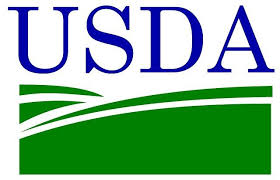First-Ever Surface Water Flows into Kerman’s Lions Park Basin will Recharge Groundwater Supplies
Lions Park Basin began receiving surface water for the first time on April 14 thanks to a new intertie connection to Fresno Irrigation District (FID)’s Siskiyou Canal. Construction on the intertie was completed in December 2024 to improve the city’s groundwater recharge capabilities.
The City of Kerman is a groundwater-dependent city, so the intertie helps put water back into the ground to replenish the aquifer during wet years.
“We are grateful for the partnership with FID to receive surface water. Kerman is committed to making an impact on groundwater sustainability now and for the future,” said City of Kerman Mayor Maria Pacheco.
Fresno County Supervisor Brian Pacheco, who also serves on the North Kings Groundwater Sustainability Agency (GSA) board of directors, said the project relieves pressure on the local aquifers that are threatened with overdraft as the community continues growing.
“The Lions Park recharge project is a great example of bringing community agencies together for the greater good,” Supervisor Pacheco said. “This project is a way to add underground water storage to achieve more sustainable water tables for both agricultural and residential users in growing communities like Kerman.”
The basin has the capacity to recharge up to 260 acre-feet in a year when supplies are available. A meter was installed as part of the project, which will help track water diversions off the canal and recharged.
“It’s exciting to see sustainability in action here. This is what partnership is all about — working together toward groundwater sustainability,” said Bill Stretch, Fresno Irrigation District General Manager.
The City of Kerman and FID are both member agencies of North Kings GSA, an agency formed after the Sustainable Groundwater Management Act (SGMA) was passed in 2014. North Kings GSA exists to fulfill state requirements for sustainable groundwater levels by 2040, under local jurisdiction. The project is a picture of how effective partnerships can locally accomplish groundwater sustainability goals under SGMA.
“Every agency has a responsibility to mitigate the impacts of their own pumping so we achieve sustainability together. This partnership gets us all closer to the goal line,” said Kassy Chauhan, North Kings GSA Executive Officer.
A water conditions report in early spring indicated that local surface water runoff conditions remain near average. FID began delivering water supplies to customers, including agricultural growers, April 1.
Read more highlights about the project here, or watch the video to see the ribbon cutting recap.










